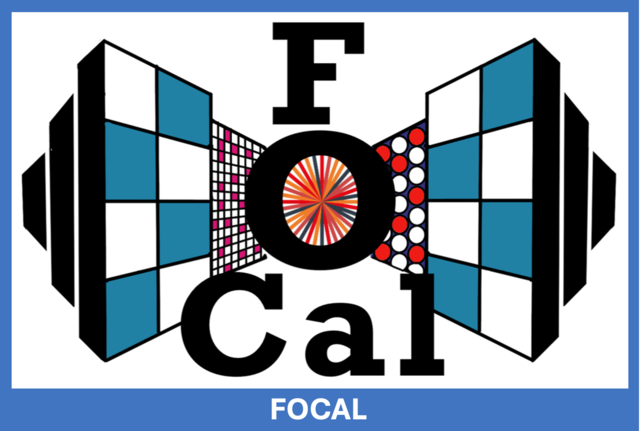
The forward electromagnetic and hadronic calorimeter (FoCal) is an upgrade to the ALICE experiment, to be installed during LS3 for data-taking in 2027–2029 at the LHC. The FoCal is a highly granular Si+W electromagnetic calorimeter combined with a conventional sampling hadronic calorimeter covering pseudorapidities of 3.4<η<5.8. The FoCal provides unique capabilities to measure small-x gluon distributions via prompt photon production and will significantly enhance the scope of ALICE for inclusive and correlation measurements with mesons, photons, and jets to explore the dynamics of hadronic matter at small x down to about 10-6.
The FoCal-E detector will consist of a Si+W sampling calorimeter hybrid design using two different Si readout technologies:
- Pad layers, with transverse cell sizes of ≈ 1cm2
- Pixel layers, with digital readout and a cell size of ≈ 30×30μm2.
All layers will consist of W sheets of ≈ 1X0 followed by silicon sensors. The figure schematically shows the FoCal-E structure with 18 pad layers and two pixel layers, positioned at the 5th and 10th layer.
The electromagnetic calorimeter of FoCal will be complemented with a hadronic calorimeter (FoCal-H), which is needed for photon isolation and jet measurements.
More details in the ALICE FoCal Documentation page
FOCAL in the News
|
Documents
|
Internal
|
|
Coordinators:
|
Participating institutes |
Representatives |
|
University of Bergen, Bergen, Norway |
D. Röhrich |
|
|
Lawrence Berkeley National Laboratory, Berkeley, USA |
P. M. Jacobs |
|
|
Institute of Physics, Bhubaneswar, India |
P.K. Sahu |
|
|
Bose Institute, Kolkata, India |
S.K. Prasad |
|
|
National Research and Innovation Agency, Jakarta, Indonesia |
S. Sumowidagdo |
|
|
Chicago State University, Chicago, USA |
E. Garcia-Solis |
|
|
China Institute of Atomic Energy, Beijing, China |
X. Li |
|
|
Creighton University, Omaha, USA |
J. Seger |
|
|
Kolkata University, Kolkata, India |
A. Chakrabarti |
|
|
Gauhati University, India |
B. Bhattacharjee |
|
|
Helsinki Institute of Physics, Helsinki, Finland |
S.S. Räsänen |
|
|
Hiroshima University, Hiroshima, Japan |
K. Shigaki |
|
|
University of Houston, Houston, USA |
R. Bellwied |
|
|
Western Norway University of Applied Sciences, Bergen, Norway |
H. Helstrup |
|
|
Indian Institute of Technology Bombay, Mumbai, India |
B.K. Nandi |
|
|
Indian Institute of Technology Indore, Indore, India |
R. Sahoo |
|
|
Jammu University, Jammu, India |
A. Bhasin |
|
|
Jadavpur University, Kolkata, India |
M. Mondal |
|
|
University of Jyväskylä, Jyväskylä , Finland |
S.S. Räsänen |
|
|
University of Kansas, Lawrence, USA |
Daniel Tapia Takaki |
|
|
Inst. of Nucl. Physics, Polish Academy of Sciences, Krakow, Poland |
J. Otwinowski |
|
|
Kumamoto University, Kumamoto, Japan |
Y. Osana |
|
|
Nagasaki Inst. of Applied Science, Nagasaki, Japan |
K. Oyama |
|
|
Nara Women’s University, Nara, Japan |
M. Shimomura |
|
|
Niels Bohr Institute, Copenhagen, Denmark |
I. Bearden |
|
|
Nat. Inst. of Science Education and Research, Bhubaneswar, India |
B. Mohanty |
|
|
Oak Ridge National Laboratory, Oak Ridge, USA |
C. Loizides |
|
|
University of Oslo, Oslo, Norway |
T. Tveter |
|
|
Panjab University, Chandigarh, India |
L. Kumar |
|
|
Institute of Physical and Chemical Research, Wako, Japan |
Y. Goto |
|
|
Saga University, Saga, Japan |
T. Fusayasu |
|
|
Universidade de Sao Paulo (USP), Sao Paulo, Brazil |
M. Munhoz |
|
|
epartment of Physics, Sejong University, Korea |
S. Oh |
|
|
Faculty of Physics, Sofia University, Sofia, Bulgaria |
V. Kozhuharov |
|
|
Center of Nuclear Study (CNS), Tokyo, Japan |
T. Gunji |
|
|
University of Tsukuba, Tsukuba, Japan |
T. Chujo |
|
|
Tsukuba University of Technology, Tsukuba, Japan |
M. Inaba |
|
|
Universidade Federal do ABC, Santo André, Brazil |
M. Cosentino |
|
|
Universidade Federal do Rio Grande do Sul, Porto Alegre, Brazil |
M.B. Gay Ducati |
|
|
University of South-Eastern Norway, Konsberg, Norway |
J. Lien |
|
|
Variable Energy Cyclotron Centre, Kolkata, India |
Z. Ahammed |
|
|
Warsaw University of Technology, Warshow, Poland |
L. Graczykowski |
|
|
Wigner Research Centre for Physics, Budapest, Hungary |
G. Barnaföldi |
|
|
Central China Normal University (CCNU), Wuhan, China |
Z. Yin |
|
|
Yonsei University, Seoul, Korea |
Y. Kwon |
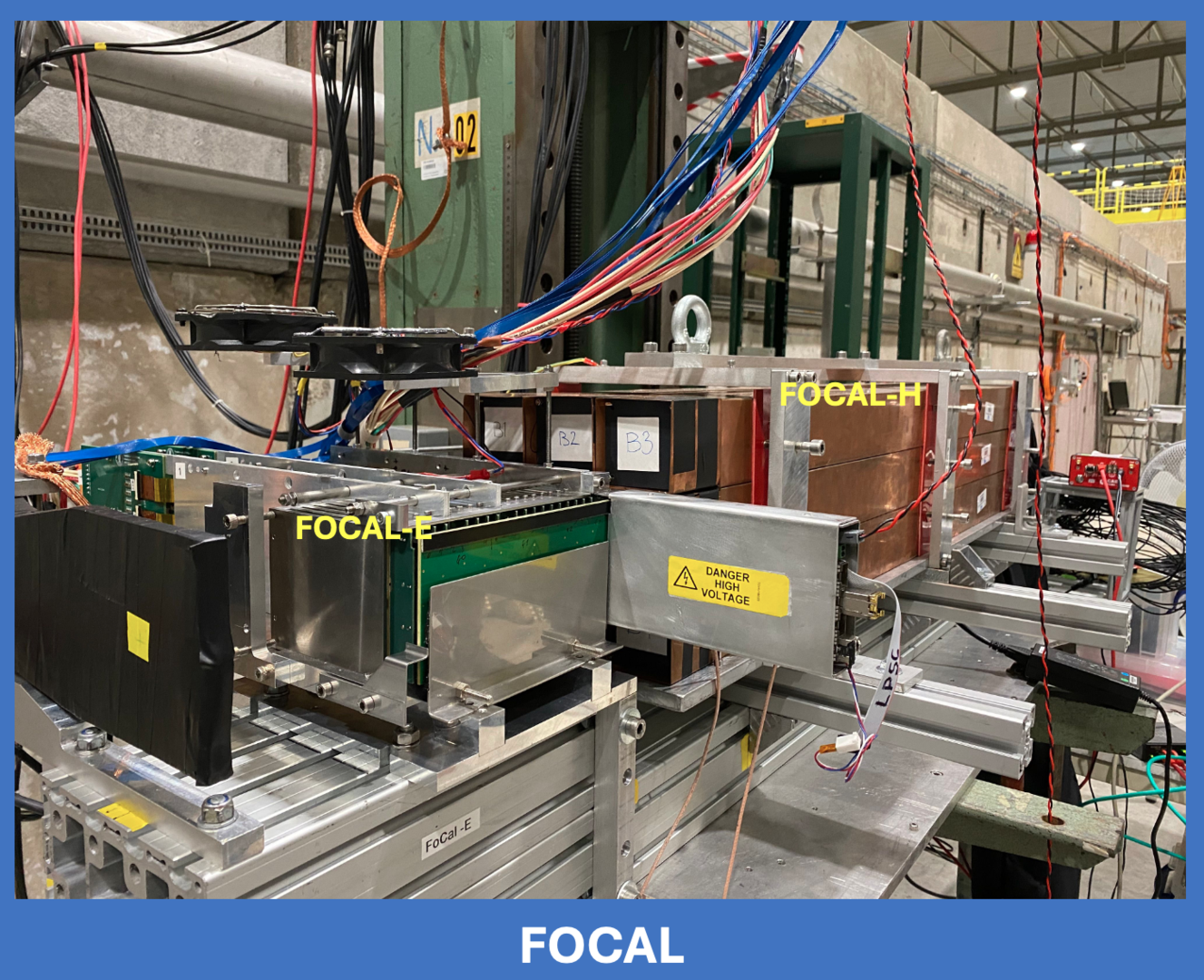
FOCAL detector setup in 2023 testbeam!
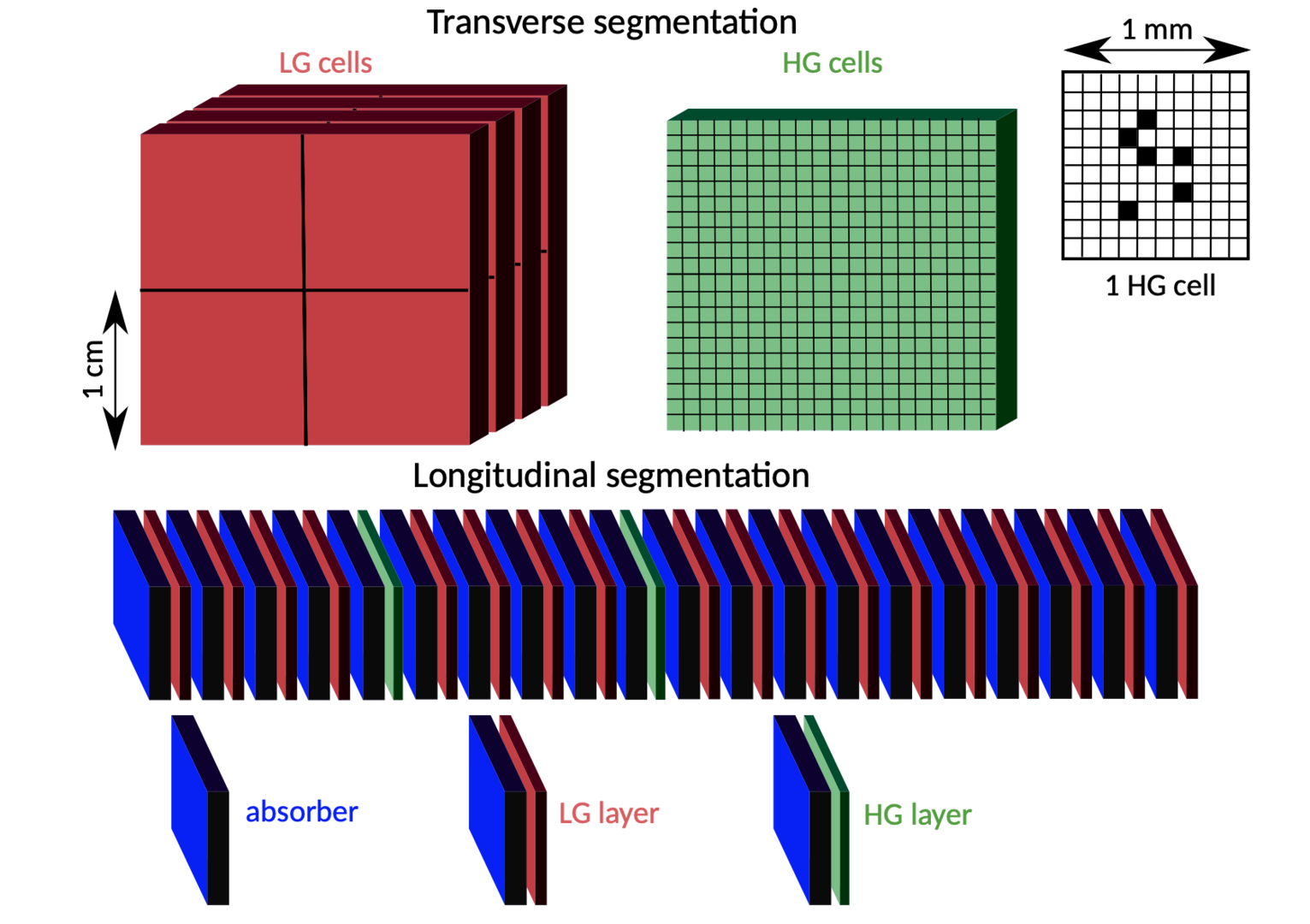
Sketch of FoCal-E, showing 20 layers of W (each 3.5 mm thick) and Si sensors. There are 18 layers consisting of pad sensors with 1 cm2 area (low granularity cells, denoted as LG) and two layers, at positions 5 and 10, consisting of pixel sensors with much finer granularity (high granularity cells, denoted as HG). Each layer can be read out individually.
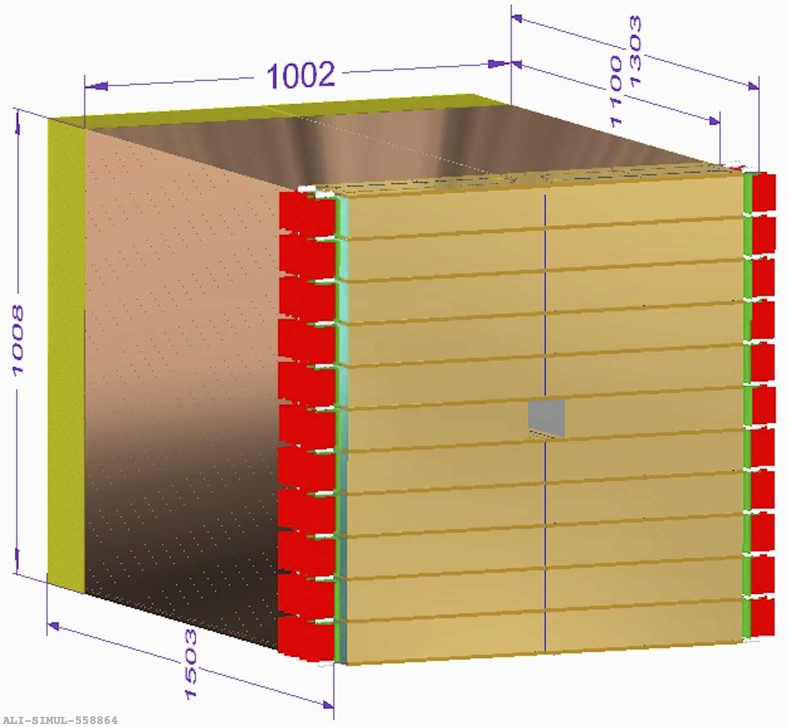
Sketch of FoCal-E and FoCal-H. The rectangular opening in the middle (84×84 mm2) accommodates the beam pipe. The horizontal space visible between the FoCal-E modules is due to the cooling plates. The readout for FoCal-E is on the detector sides, while for FoCal-H it is at the back of the detector. Dimensions are given in mm.
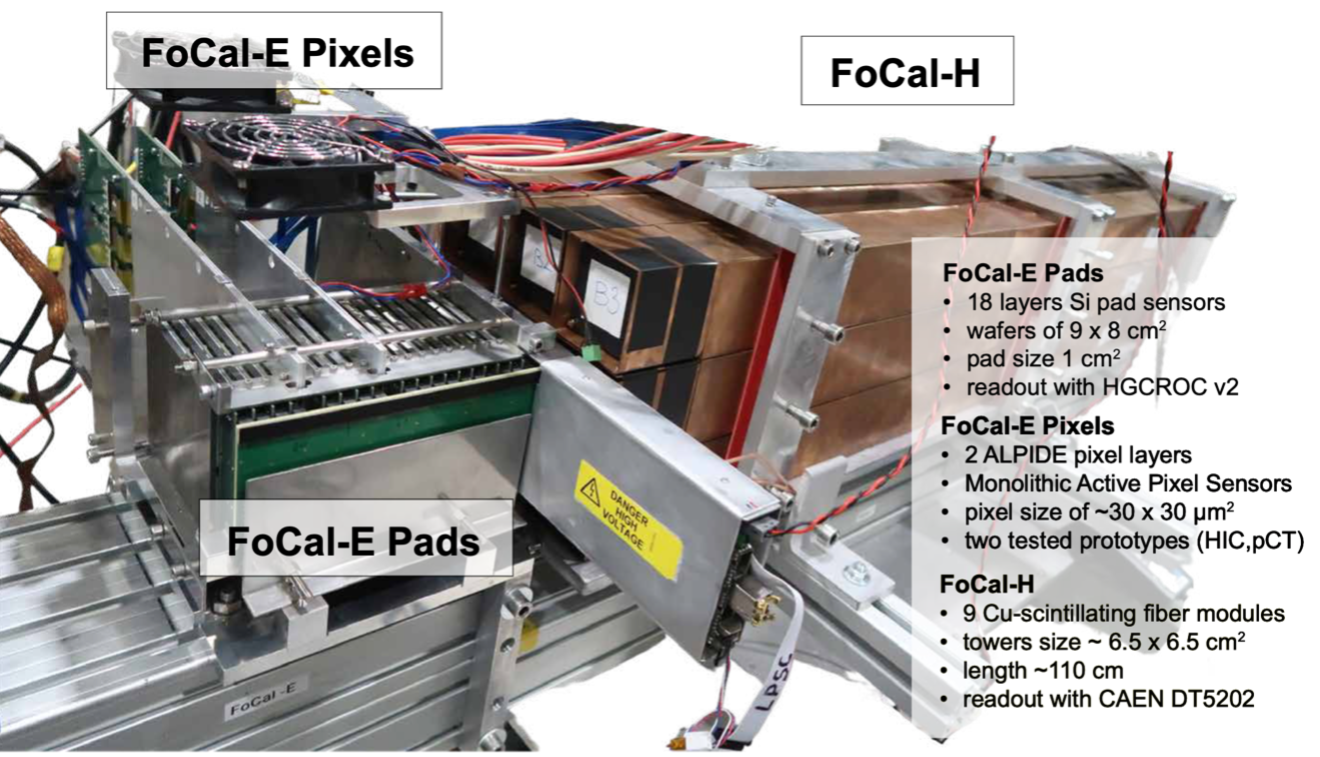
The final prototype of FoCal-E and FoCal-H tested at the SPS in the fall of 2022 and May of 2023.
